Abstract
Hypersensitivity to formalin used to sterilise artificial kidney machines was shown by inhalation provocation tests to be responsible for attacks of wheezing accompanied by productive cough in two members of the nursing staff of a haemodialysis unit. Three further members of the staff of 28 who were continually exposed to this substance occupationally had developed similar recurrent but less frequent episodes since joining the unit. Two underwent inhalation provocation tests with formalin which did not reproduce these symptoms.Single episodes of these symptoms had been noted by three additional staff members so that altogether eight (29%) had experienced attacks described as bronchitic since becoming exposed to formalin. We suggest that, while exposure to formalin did not seem to be directly responsible in all cases, it might have increased susceptibility to other provoking agents or induced a hyper-reactive responsiveness of the airways. The responses observed in the two nurses after inhalation provocation tests with fromalin were predominantly of airways obstruction. Wheezing began between two and three hours after exposure, and peak expiratory flow rates fell maximally by approximately 50%. Reactions persisted for 10 hours to 10 days depending on the exposure dose. A productive cough was a prominent feature. The sputum appeared to be mucopurulent, but culture produced a scanty growth of Haemophilus influenzae only, together with upper respiratory tract commensals. The cellular content was not homogeneous, neutrophil leucocytes and eosinophil leucocoytes variably dominating. Variable responses of neutrophil and eosinophil leucocytes were also seen in the peripheral blood.
Full text
PDF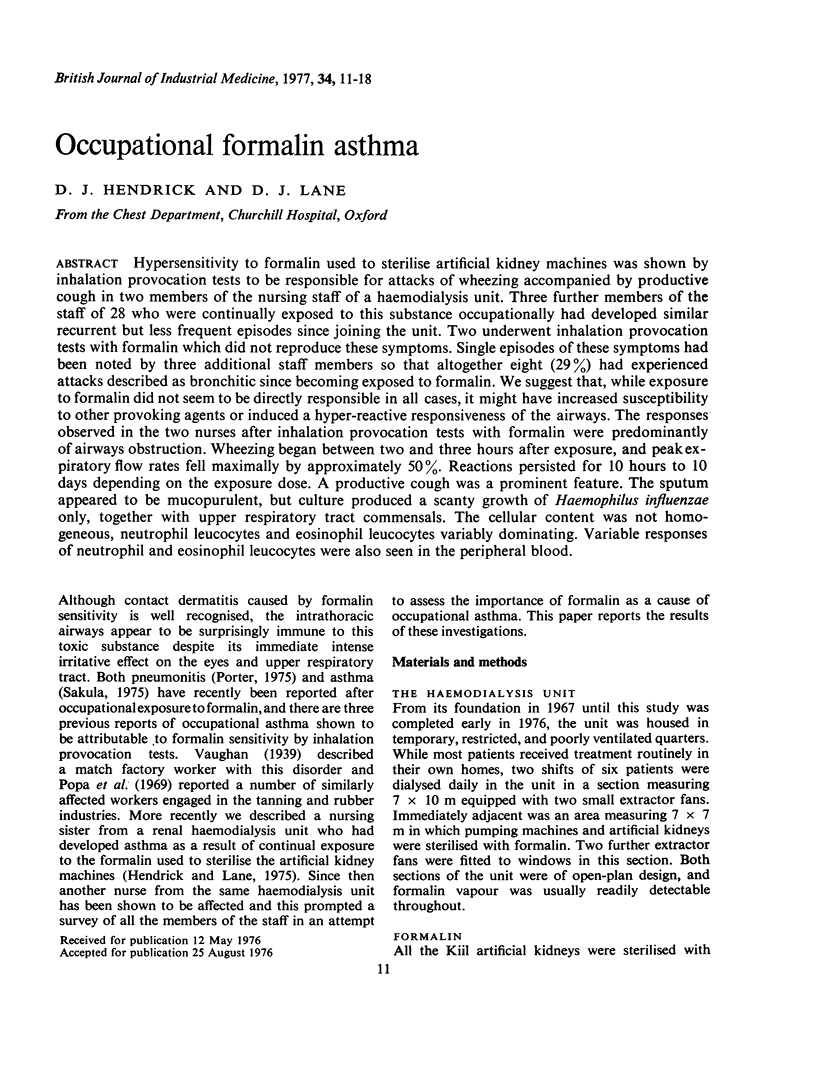
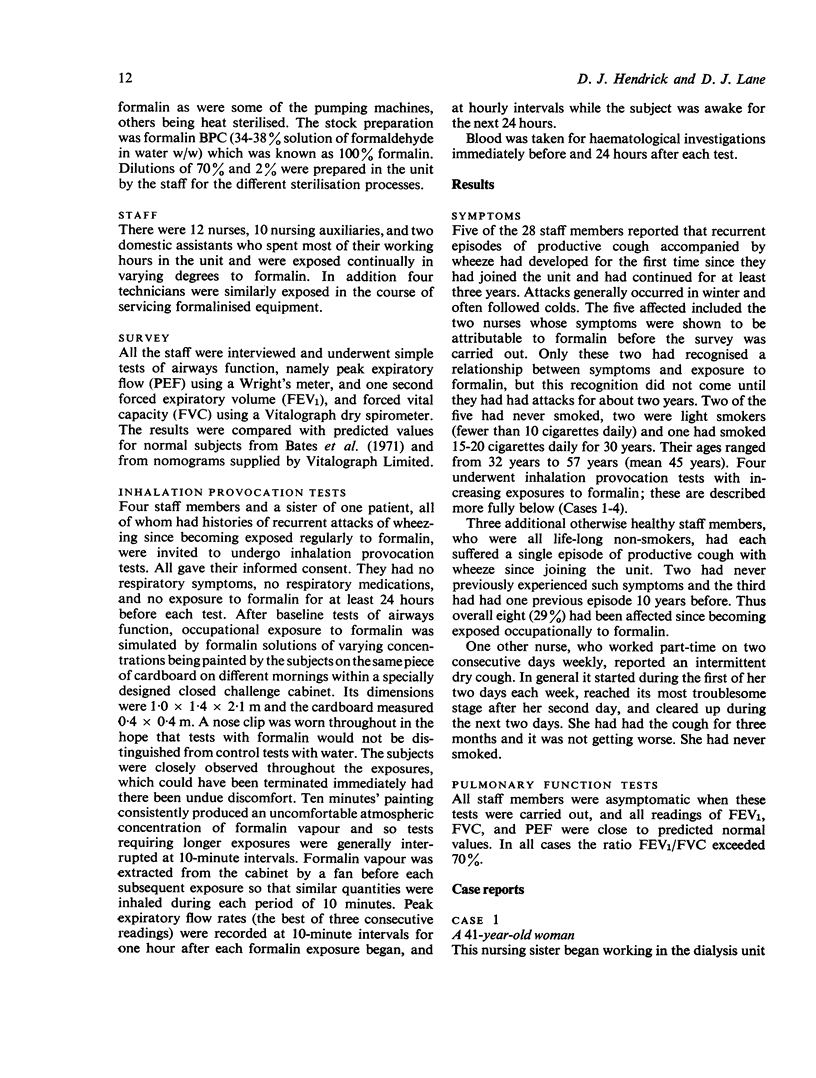

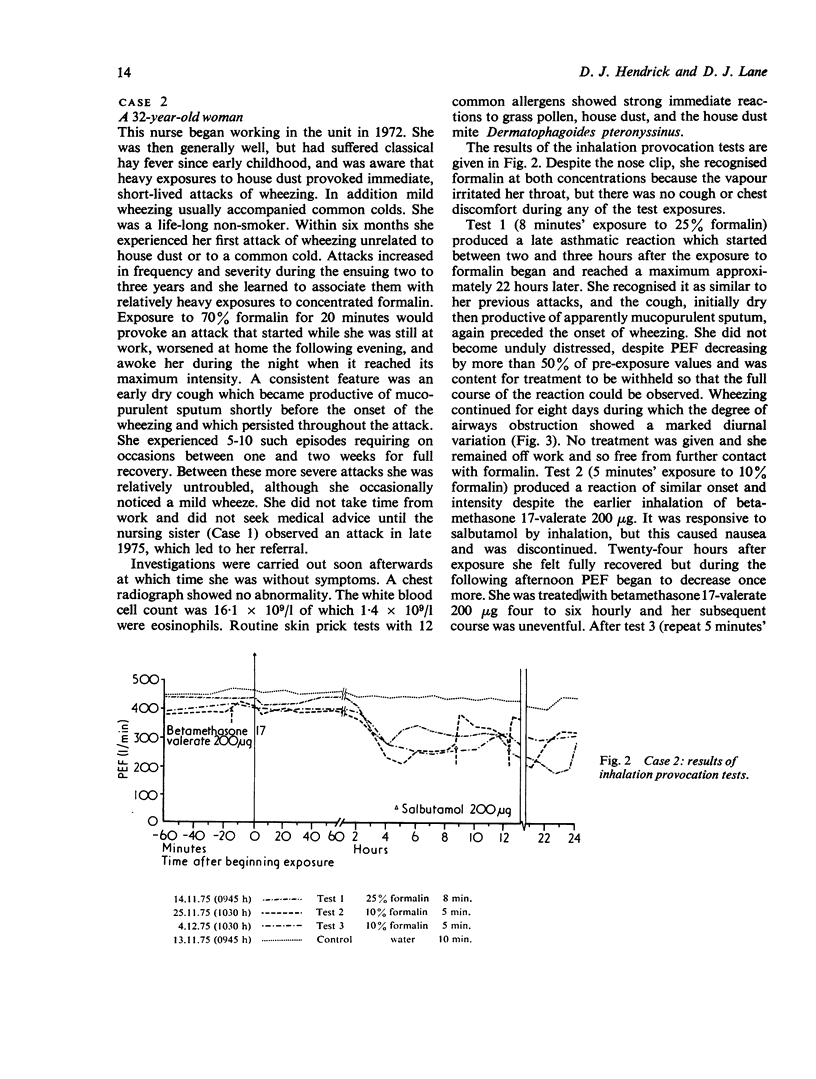


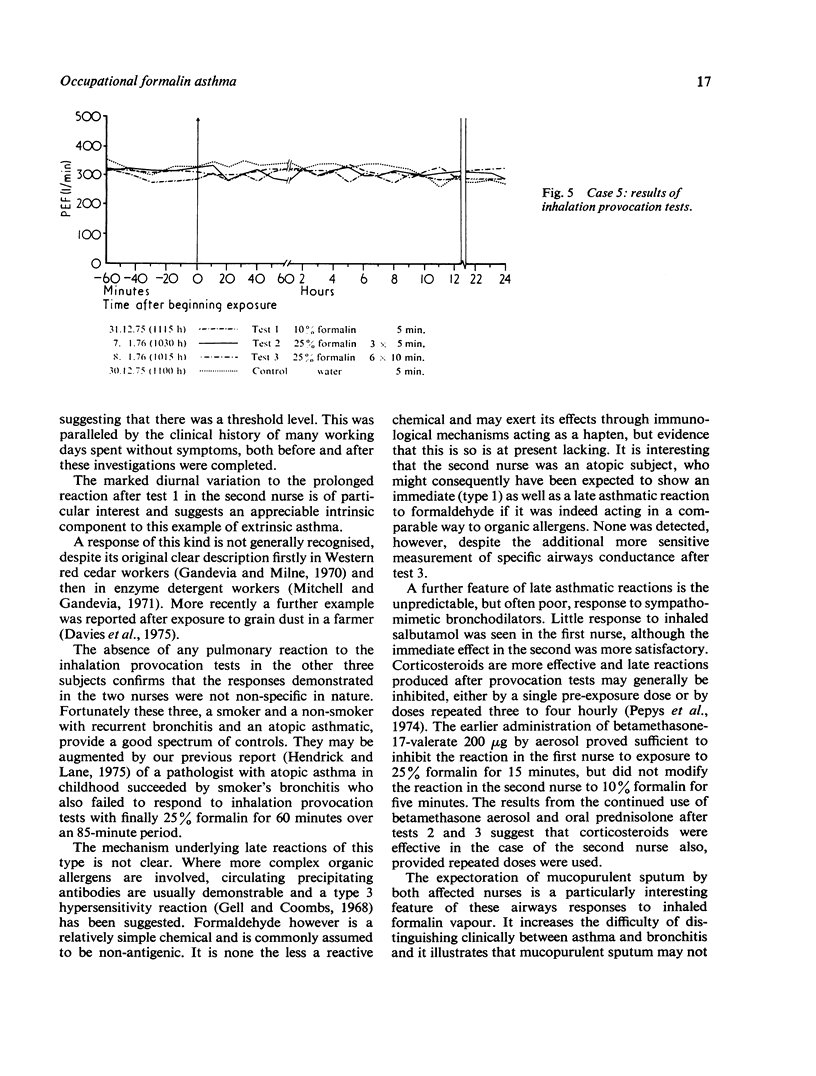
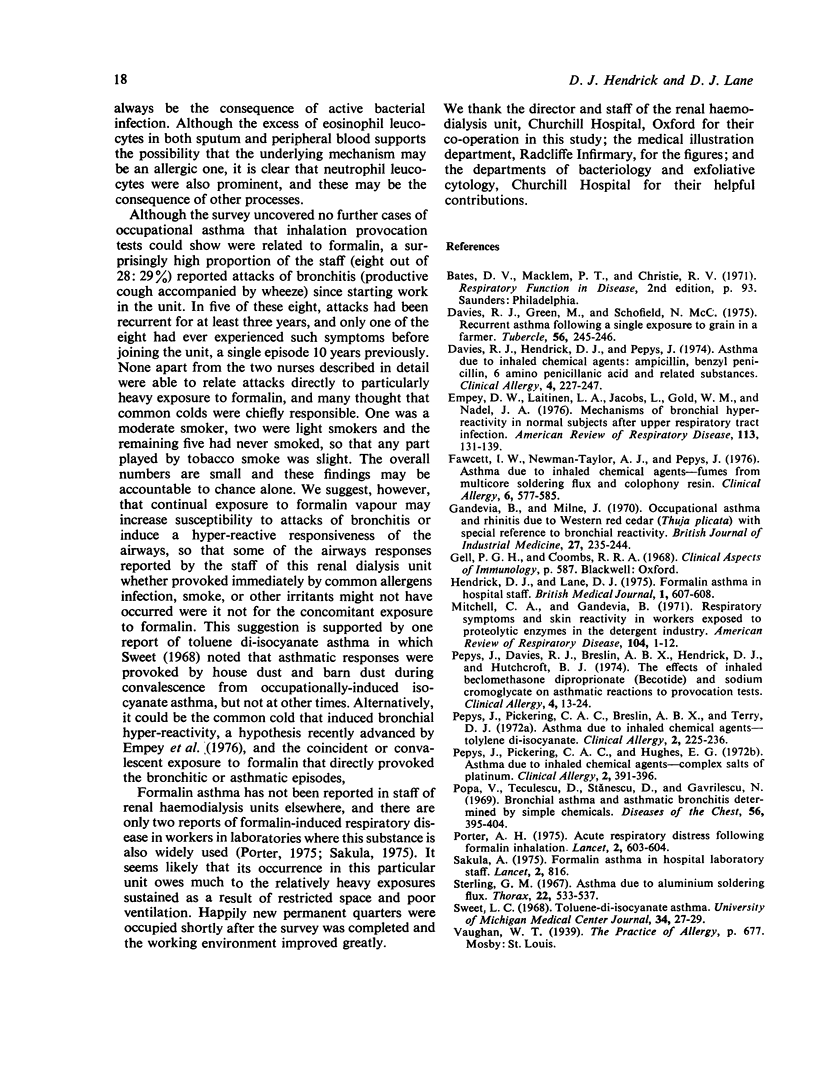
Selected References
These references are in PubMed. This may not be the complete list of references from this article.
- Davies R. J., Hendrick D. J., Pepys J. Asthma due to inhaled chemical agents: ampicillin, benzyl penicillin, 6 amino penicillanic acid and related substances. Clin Allergy. 1974 Sep;4(3):227–247. doi: 10.1111/j.1365-2222.1974.tb01381.x. [DOI] [PubMed] [Google Scholar]
- Empey D. W., Laitinen L. A., Jacobs L., Gold W. M., Nadel J. A. Mechanisms of bronchial hyperreactivity in normal subjects after upper respiratory tract infection. Am Rev Respir Dis. 1976 Feb;113(2):131–139. doi: 10.1164/arrd.1976.113.2.131. [DOI] [PubMed] [Google Scholar]
- Fawcett I. W., Taylor A. J., Pepys J. Asthma due to inhaled chemical agents--fumes from 'Multicore' soldering flux and colophony resin. Clin Allergy. 1976 Nov;6(6):577–585. doi: 10.1111/j.1365-2222.1976.tb01944.x. [DOI] [PubMed] [Google Scholar]
- Gandevia B., Milne J. Occupational asthma and rhinitis due to Western red cedar (Thuja plicata), with special reference to bronchial reactivity. Br J Ind Med. 1970 Jul;27(3):235–244. doi: 10.1136/oem.27.3.235. [DOI] [PMC free article] [PubMed] [Google Scholar]
- Hendrick D. J., Lane D. J. Formalin asthma in hospital staff. Br Med J. 1975 Mar 15;1(5958):607–608. doi: 10.1136/bmj.1.5958.607. [DOI] [PMC free article] [PubMed] [Google Scholar]
- Mitchell C. A., Gandevia B. Respiratory symptoms and skin reactivity in workers exposed to proteolytic enzymes in the detergent industry. Am Rev Respir Dis. 1971 Jul;104(1):1–12. doi: 10.1164/arrd.1971.104.1.1. [DOI] [PubMed] [Google Scholar]
- Pepys J., Davies R. J., Breslin A. B., Hendrick D. J., Hutchcroft B. J. The effects of inhaled beclomethasone dipropionate (Becotide) and sodium cromoglycate on asthmatic reactions to provocation tests. Clin Allergy. 1974 Mar;4(1):13–24. doi: 10.1111/j.1365-2222.1974.tb01358.x. [DOI] [PubMed] [Google Scholar]
- Pepys J., Pickering C. A., Breslin A. B., Terry D. J. Asthma due to inhaled chemical agents, tolylene di-isocyanate. Clin Allergy. 1972 Sep;2(3):225–236. doi: 10.1111/j.1365-2222.1972.tb01287.x. [DOI] [PubMed] [Google Scholar]
- Pepys J., Pickering C. A., Hughes E. G. Asthma due to inhaled chemical agents--complex salts of platinum. Clin Allergy. 1972 Dec;2(4):391–396. doi: 10.1111/j.1365-2222.1972.tb01303.x. [DOI] [PubMed] [Google Scholar]
- Popa V., Teculescu D., Stănescu D., Gavrilescu N. Bronchial asthma and asthmatic bronchitis determined by simple chemicals. Dis Chest. 1969 Nov;56(5):395–402. doi: 10.1378/chest.56.5.395. [DOI] [PubMed] [Google Scholar]
- Porter J. A. Letter: Acute respiratory distress following formalin inhalation. Lancet. 1975 Sep 27;2(7935):603–604. doi: 10.1016/s0140-6736(75)90189-0. [DOI] [PubMed] [Google Scholar]
- Sakula A. Formalin asthma in hospital laboratory staff. Lancet. 1975 Oct 25;2(7939):816–816. doi: 10.1016/s0140-6736(75)80039-0. [DOI] [PubMed] [Google Scholar]
- Sterling G. M. Asthma due to aluminium soldering flux. Thorax. 1967 Nov;22(6):533–537. doi: 10.1136/thx.22.6.533. [DOI] [PMC free article] [PubMed] [Google Scholar]
- Sweet L. C. Toluene-diisocyanate asthma. Univ Mich Med Cent J. 1968 Jan-Feb;34(1):27–29. [PubMed] [Google Scholar]


